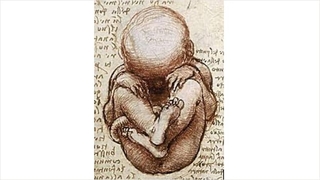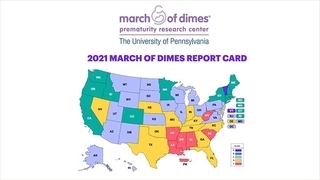Neonatology Research
The Division of Neonatology has a robust research program that focuses on several key areas: understanding the fundamental biology of preterm birth and its complications, meticulously testing new therapeutics in newborns through expertly designed clinical trials, developing new knowledge about risk factors for poor outcomes in sick neonates through rigorous observational studies, and developing new understanding of the social and medical impact of the organization and economy of healthcare delivery structures on maternal and child health. In addition, the Division also serves as a national leader in the development and conduct of multicenter and single-center clinical trials. As a member of the National Institute of Child Health and Human Development’s Neonatal Research Network, the Division is at the forefront of academic centers in clinical and epidemiological research in the United States.
The Division has recognized strength in neonatal follow-up and outcomes research; laboratory research into the fetal origins of adult disease, the causes of preterm birth and fetal growth restriction, inflammatory lung diseases, and drug discovery for rare genetic diseases; and research in neonatal infectious disease, antibiotic stewardship, and the microbiome and its impact of long-term health.
In collaboration with CHOP’s Research Institute, we oversee the work of more than 150 investigators pursuing hundreds of active research projects.
Division of Neonatology Areas of Research
Children's Environmental Health

Philadelphia is the poorest large city in the country. Children living in Philadelphia face a number of environmental threats to their health every day — from lead poisoning and air pollution to exposure to asbestos and endocrine-disrupting chemicals, the compounds found in household products and the environment that have been linked to preterm birth. In an effort to address these hazards and identify and protect pregnant people and their children who live in the region's most vulnerable communities, Attending Neonatologist Rebecca Simmons, MD, and colleagues at Children's Hospital of Philadelphia and the Perelman School of Medicine at the University of Pennsylvania are joining forces by integrating their expertise in the new Philadelphia Regional Center for Children’s Environmental Health (PRCCEH NOTE-once the website is up and running we can provide the link here) funded by the National Institutes of Health (NIH). The team’s goal is to stimulate new translational research projects and increase awareness by disseminating children's environmental health knowledge to healthcare providers, community members and policy makers. Current projects are examining the links between several environmental factors including air pollution, green space, endocrine disruptors and preterm birth.
- Rebeccca A. Simmons, MD
- Colin Conine, PhD
- Scott Gordon, MD, PhD
- Heather H. Burris, MD
- Scott A. Lorch, MD, MSCE
Clinical Trials/Neonatal Research Network
Developmental Origins of Health and Disease

Extensive efforts to understand the association of early-life perturbations with later onset of metabolic diseases, the founding principle of developmental origins of health and disease, have been crucial in determining the mechanisms that drive the later development of diseases. As the programming of the epigenome occurs during critical periods of development, it has emerged as a potential molecular mechanism that could occur early in life and impact metabolic health decades later. Research in the Conine Lab and Simmons Lab focuses epigenetic mechanisms which have a potential to be influenced by extrinsic environmental factors (such as diet, physical activity, in utero environment, chemical exposure and stress). It is critical to identify epigenetic targets that are modified following suboptimal environment early in life and determine their contribution to the development of a disease phenotype later in life and possibly its progeny. We are investigating novel diagnostic tools and developing innovative therapeutic strategies to prevent the later development of obesity and diabetes.
Fetal/Neonatal Lung Disease

CHOP’s Division of Neonatology is at the forefront of paradigm-changing research in basic/translational and clinical research in the field of neonatal lung development, pathophysiology, clinical interventions and outcomes. Publications from the division have already changed the dialogue about how neonatal lung diseases are diagnosed and treated. We also have a unique and large multidisciplinary program dedicated to bronchopulmonary dysplasia, which provides a unique opportunity to learn from this patient population with the goal of providing the best and most accurate therapy for each patient. Several NIH-funded investigators are working in this area and have a stellar track record of mentoring trainees.
- Krithika Lingappan, MD, PhD, MS
- G. Scott Worthen, MD
- Shaon Sengupta, MBBS, MPH
- Danielle A. Callaway, MD, PhD
- Erik Jensen, MD, MSCE
- Nicolas Bamat, MD, MSCE
March of Dimes Preterm Birth Research Center

The March of Dimes Prematurity Research Center at the University of Pennsylvania — led by CHOP Attending Neonatologist Rebecca Simmons, MD, and Penn Medicine Maternal-Fetal Medicine Specialist Samuel Parry, MD — is one of five national and international centers dedicated to identifying the causes of preterm birth that will result in more effective strategies to prevent preterm birth in the future. Penn’s transdisciplinary team of investigators with expertise in obstetrics, pediatrics, neonatology, genetics, metabolism, cell and developmental biology, bioengineering, microbiology, and reproductive biology are working together to solve this problem. Research is currently focused on understanding the mechanisms that underlie placenta dysfunction and the link to preterm birth and how the maternal immune system and the developing placenta communicate with each other.
Neonatal Follow-Up/Long-Term Outcomes of Premature Birth
Neonatal Immunology and Infectious Disease
- Scott Gordon, MD, PhD
- Kathryn Rubey, MD
- G. Scott Worthen, MD
- Dustin D. Flannery, DO, MSCE
- Lakshmi Srinivasan, MD, FAAP
- Mary C. Harris, MD
- Karen M. Puopolo, MD, PhD
- Sagori Mukhopadhyay, MD, MMSc
- Carolyn McGann, MD
Neonatal Outcomes and Health Services Research
Health Policy
Racial/Ethnic Disparities
Quality of Care Assessment
Community Drivers of Outcomes
Hospital Characteristics and Systems